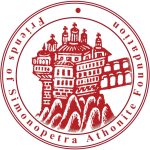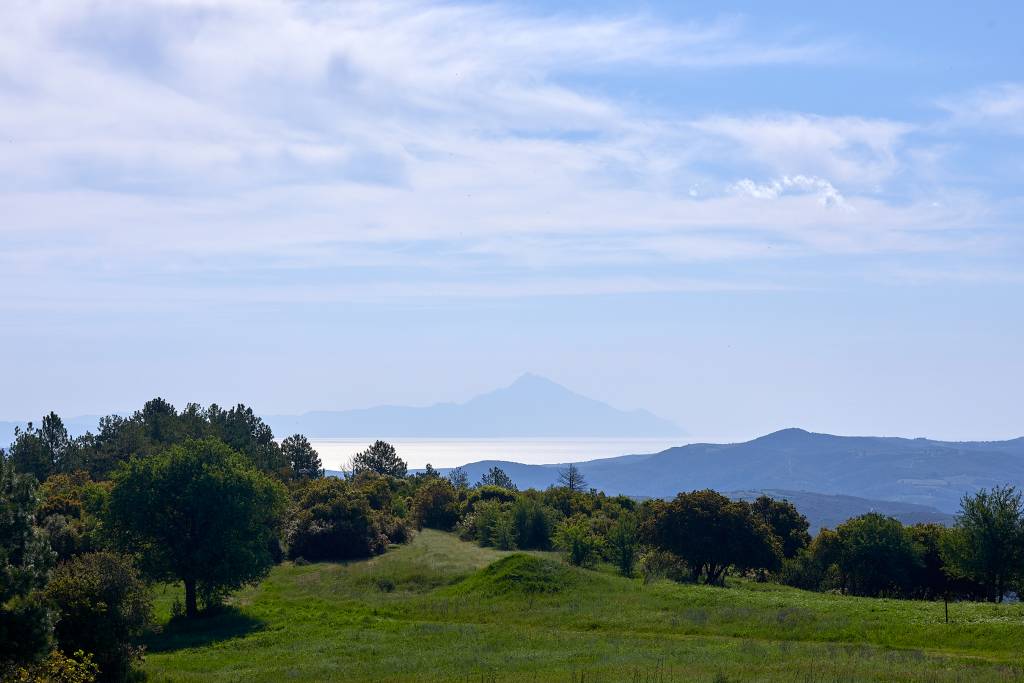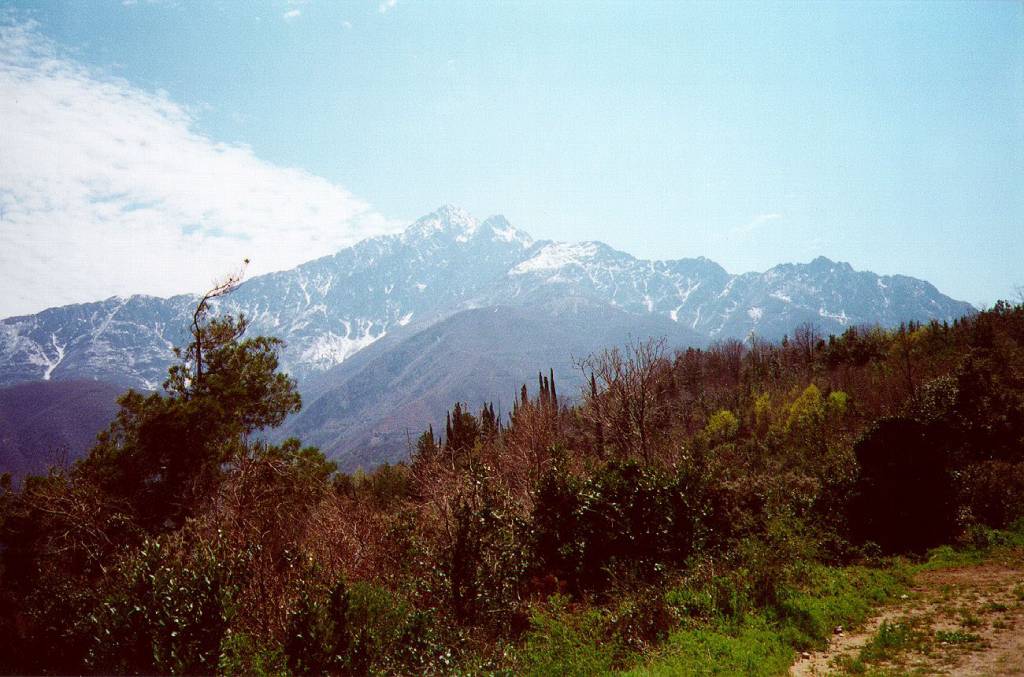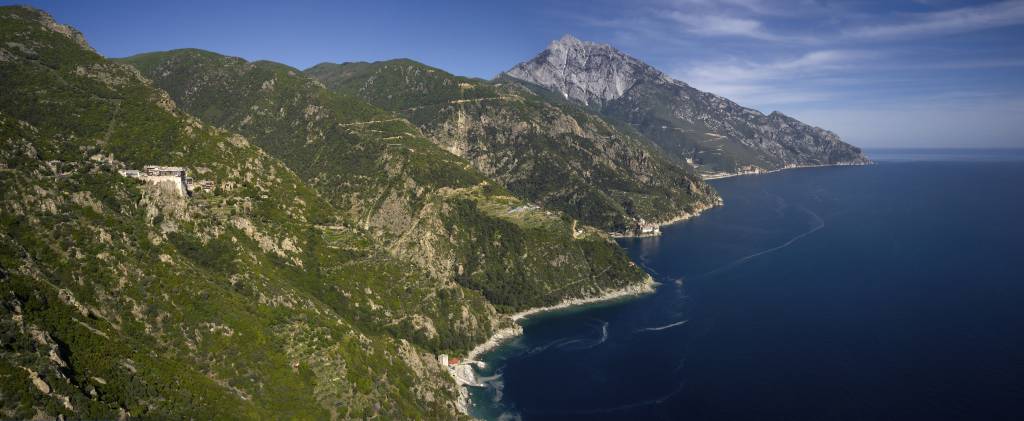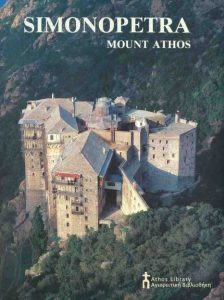
About Mount Athos
The Holy Mountain
The Holy Mountain, also known as the Peninsula of Athos, is the third, eastern-most peninsula of Chalkidiki, in Central Macedonia and constitutes a self-governed region of the Greek State. Its organized monastic history begins in the 10th century and lives on, uninterrupted, to date, under various rulers (Byzantine, Ottoman and Greek). Its land, totaling 336 km2, is split between its 20 sovereign and self-governed Holy Monasteries, where buildings and natural environment mesh harmoniously.
The Holy Mountain is not a cultural and spiritual heritage, only because of its invaluable art treasures and its non-repeatable natural wealth of unequalled beauty and serene landscape, but, mainly, it has become unique due to its monastic spiritual tradition.
Its basic characteristic is the unbroken and functional union of monastic life and the surrounding natural environment; justifiably considered as spiritual wealth of top importance for Greece and the Globe, a representative symbol of spirituality and Christian values.
The Committee of the Center for Global Culture in its pertinent report of 2006, notes that “it is not an overstatement for one to say that, this millennium-old region, where the weight of history can be felt in the outdoors, on the monuments and the valuable heirlooms, which have been collected slowly and steadily over time, still maintains, today, its ecumenical and superb importance”.
For these reasons, the Holy Mountain has been included, since 1981, in UNESCO’s Global Heritage Sites, while the whole Athos peninsula belongs to the NATURA 2000 network under code number GR 127003 and the characterization as a Site of Community Importance (SCI) due to its bio-diversity, flora and fauna.
Following an uninterrupted life of 11 centuries, the Holy Mountain faces opportunities and challenges from the current globalized reality and tries to graft the new tradition into the old, naturally with the unavoidable multi-dimensional changes, thereupon.
In our time, about 1500 monks live in the 20 sovereign monasteries and the about 700 monastic premises. Thus, all types of eastern monasticism (coenobitic monasteries, sketes / cloisters, cells and hermitages) continue to survive.
The monks of the Mountain come from various nationalities and Athos retains the character of a global orthodox monastic and Christian cultural center. This “monastic commonwealth”, solidly bound to the principles of community life and brotherly communion of the early Christians, is an example for the co-existence of persons from different origins, with common faith being their catalytic bond. This, of course, is an achievement of ecumenical dimensions.
Undoubtedly, the Holy Mountain is one of the most important laboratories that cultivate the civilization of all Christian nations in the wider area and, today is the trustee of Orthodoxy’s spiritual heritage. This civilization stems from and incessantly flows out of the monastic life and saturates all its aspects.
The monastic way of life gave birth to the mystical – neptic tradition, the ascetic accomplishments, the spiritual ministries, justice per se, as well as architectural and artistic works, both tangible and intangible, various (living and worship) facilities, handiwork items, (acclimatized) cultivations; in other words, a gigantic, singular, invaluable institutional, spiritual, cultural and natural reservation was created which, in its totality, comprises the treasures of the Holy Mountain, bearing unequalled value and harmonized beauty.
These cultural treasures, devotedly kept by the monks, are in their natural environment contributing, above all, to the worship of the Divine. In a parallel way, all other kinds of ecclesiastical art, e.g., hymnography, Byzantine chants, ecclesiastical garment weaving, woodcarving and more, primarily serve the art of living divinely; such being the “intangible heritage”.
Monastics strive to pursue living in harmony with the natural environment. To is being dealt with, neither statically, nor for exploitation but, as a divine gift, that must take part in the monks’ incessant worship of the Divine. For centuries, the monks use the natural resources of the Holy Mountain, in accordance with the spiritual principles of asceticism, frugality and temperance.
Therefore the protection of the Athonite environment is not, primarily, a matter of successfully plotting it, but rather, basically, it is a result of the daily practice of the true monastic spiritual life. The environment of the Holy Mountain is preserved because the spiritual principles and visions are transformed into tangible material consequences.
On all levels, the guiding principles for the organization of the monastic communities on the Holy Mountain are those of self-government by a synod, per which the preservation of the institutions over the years is assured, while, also allowing for a great degree personal initiatives and personal freedom.
This particular character of the Hagiorite status, is a unique phenomenon of institutional stability; it managed to remain unaltered through the centuries, on one hand, due to the respect it commanded from the various, at each time, authorities (Byzantine, Ottoman, Greek and International) vis-à-vis the monastic uniqueness and, on the other hand, due to the vigilance and care of the Hagiorites, who have consciously comprehended their own personal responsibilities, vis-à-vis history as well as, toward the people who look up to the Holy Mountain as the venue of hope. Athonite institutions or, in other words, the ancient privileged status of the Holy Mountain, as historically founded and documented, comprise the foundation and the guarantee of / for the monks’ life and activities.
The institutional net of the Holy Mountain is not a code of legal orders but a living tradition; it incorporates and protects the prerequisites and choices of monastic life, (“avaton”, off limits for females), the ethos and the dogma, worship, the hesychastic character, the coenobitic life, self-management, the ecumenical dimension and coexistence , the protection of the human person and the quality of human relations.
UNESCO’s Joint Mission to the Holy Mountain, in 2006, states that “… the substantial tangible heritage of the Holy Mountain, cannot be separated from the intangible practices of worship and the traditions that gave birth to it and which secured its survival to our days … Any approach to the long-time conservation of the Holy Mountain must recognize the overwhelming significance of the living nature of the heritage and must incorporate the factor of nature in the framework of the preservation of the living traditions of the religious heritage … The survival of the Holy Mountain for more than one thousand years of tremendous changes, affords great confidence in its own institutions and in the rightness of its priorities”
Interested in leaning more about simonopetra and Mount Athos?
Download for free the book written by Papadopoulos Stelios bellow.
